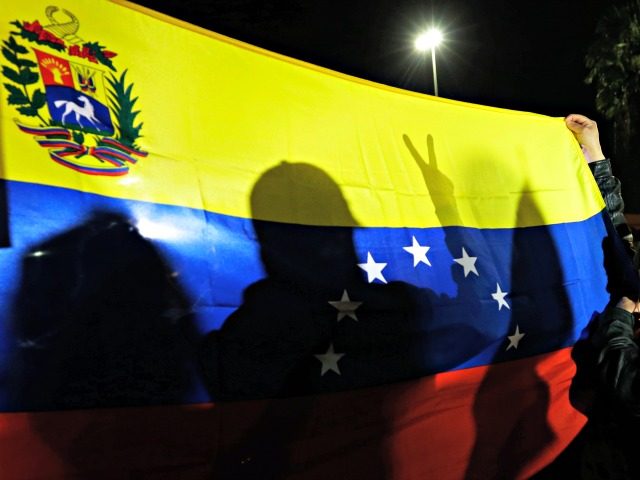Granting Temporary Protected Status (TPS) to Venezuelan nationals, as Democrats and Sen. Marco Rubio (R-FL) support, will encourage more mass migration to the United States, Colorado State University professor Philip Cafaro says.
During an exclusive interview with SiriusXM Patriot’s Breitbart News Sunday, Cafaro said recent efforts to give TPS to Venezuelans would, like other TPS categories, not end up being temporary at all.
Cafaro said:
[TPS for Venezuelans is] not something I’d support. One problem with Temporary Protected Status is it doesn’t usually wind up being too temporary. We’ve had countries in Central America that have been in TPS for 20 and almost 30 years now. That’s one problem with it. [Emphasis added]
Another problem with it is it tends to encourage more migration, and I think rather than lurching from one crisis to another, what we need in the United States is we need an immigration policy that’s going to benefit Americans and work for the common good. [Emphasis added]
TPS has become a quasi-amnesty for otherwise illegal aliens created under the Immigration and Nationality Act of 1990 (INA) that prevents the deportation of foreign nationals from countries that have suffered through famine, war, or natural disasters. Since the Clinton administration, TPS has been transformed into a de facto amnesty program as the Bush, Obama, and now Trump administrations have continuously renewed the program for a variety of countries.
Cafaro also said the Democrats’ Green New Deal initiative does nothing to address one of the largest burdens on the environment, immigration, which is set to double the U.S. population by the end of the century.
“You can’t really say to Americans ‘Well look, you should pay more gasoline or you should cut back on your flying’ and then at the same time turn around and say, ‘Oh, by the way, we’re going to have immigration levels set so that we’re going to double our population in 70 or 80 years,” Cafaro said.
“I mean, all you’re doing then in the best case scenario is freeing up space so that other people can generate all these problems. It really doesn’t add up,” Cafaro said of the Green New Deal.
Among the problems with the Green New Deal, Cafaro said, is that the initiative fails to recognize that the U.S. population is being solely artificially increased through the country’s mass legal immigration system — where more than 1.5 million immigrants are admitted every year.
Cafaro contends that while the Green New Deal focuses on reducing greenhouse gas emissions, the plan keeps legal immigration levels at the same, historically high rate that will lead to the destruction of more farmlands and woodlands while adding more commercial development.
“In every case, more people means more environmental problems, more environmental impacts,” Cafaro said.
Think about maybe places you’ve known, maybe places you’ve known from maybe when you were younger that have been developed since then. It could be farmlands, it could be forests, it could be wetlands. A lot of America has been paved over in the past couple of decades. And then ask yourself, how much more would we have to pave over if we had 200 million more people who all need houses, roads, stores, etc. [Emphasis added]
So immigration-driven population growth has an impact on sprawl. Immigration population growth has an impact on air and water pollution. These are the kinds of things that used to be common sense to environmentalists back when environmentalism started but somehow we’ve sort of forgotten about it. [Emphasis added]
Past decades that experienced record levels of legal immigration — like the U.S. has since the 1970s — have been met with an immigration moratorium to allow new arrivals time to assimilate and citizens the ability to absorb new arrivals.
The country’s last immigration boom — between 1900 and 1920 — was eventually met with a near immigration moratorium. Between 1925 and 1966, the yearly U.S. legal immigration level did not exceed 327,000 admissions, a four-decades-long near moratorium that allowed the massive inflows of immigrants from before 1925 the ability to assimilate.
The latest data from the U.S. Census Bureau marks a nearly 108-year record high of immigration to the country. In 2017, the foreign-born population boomed to 13.7 percent, encompassing 44.5 million immigrants, including 22 million naturalized citizens, 11 million other residents — including more than 1.5 million foreign temporary visa workers — plus an estimated 11 million illegal aliens.
The last time the U.S. foreign-born population was this high was in 1910, when immigrants made up 14.7 percent of the total country’s population.
John Binder is a reporter for Breitbart News. Follow him on Twitter at @JxhnBinder.

COMMENTS
Please let us know if you're having issues with commenting.